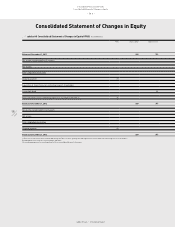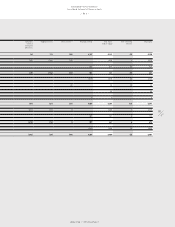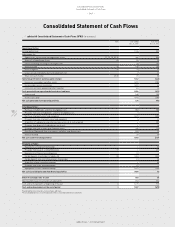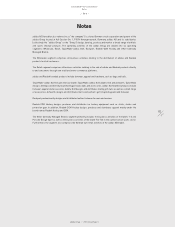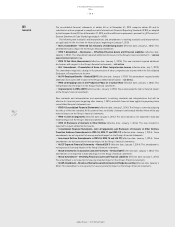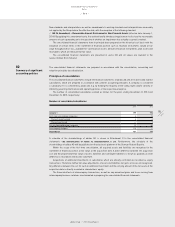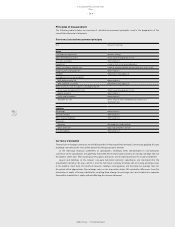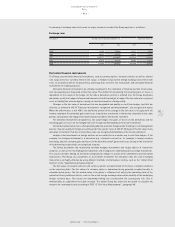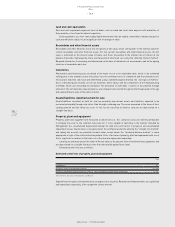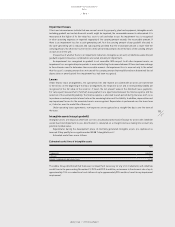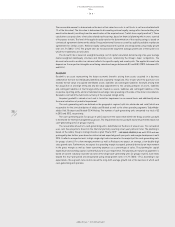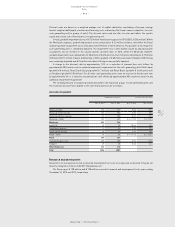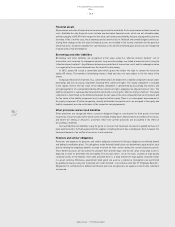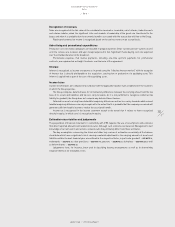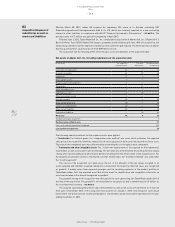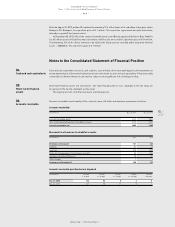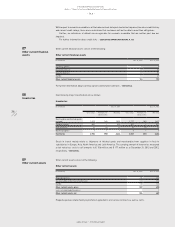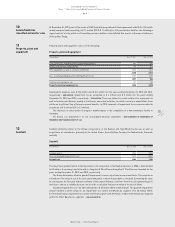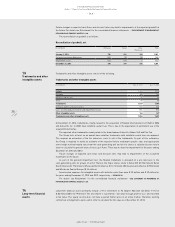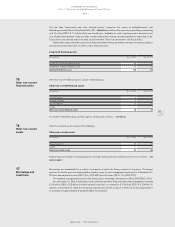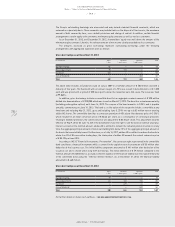Reebok 2013 Annual Report Download - page 204
Download and view the complete annual report
Please find page 204 of the 2013 Reebok annual report below. You can navigate through the pages in the report by either clicking on the pages listed below, or by using the keyword search tool below to find specific information within the annual report.
adidas Group
/
2013 Annual Report
Consolidated Financial Statements
200
2013
Notes
/
04.8
/
The recoverable amount is determined on the basis of fair value less costs to sell (costs to sell are calculated with
1% of the fair value). The fair value is determined in discounting notional royalty savings after tax and adding a tax
amortisation benefit, resulting from the amortisation of the acquired asset (“relief-from-royalty method”). These
calculations use projections of net sales related royalty savings, based on financial planning which covers a period
of four years in total. The level of the applied royalty rate for the determination of the royalty savings is based on
contractual agreements between the adidas Group and external licensees as well as publicly available royalty rate
agreements for similar assets. Notional royalty savings beyond this period are extrapolated using steady growth
rates of 1.7% (2012: 1.7%). The growth rates do not exceed the long-term average growth rate of the business to
which the trademarks are allocated.
The discount rate is based on a weighted average cost of capital calculation derived using a five-year average
market-weighted debt/equity structure and financing costs referencing the Group’s major competitors. The
discount rate used is an after-tax rate and reflects the specific equity and country risk. The applied discount rate
depends on the respective intangible asset being valued and ranges between 6.8% and 8.8% (2012: between 6.5%
and 8.4%).
Goodwill
Goodwill is an asset representing the future economic benefits arising from assets acquired in a business
combination that are not individually identified and separately recognised. This results when the purchase cost
exceeds the fair value of acquired identifiable assets, liabilities and contingent liabilities. Goodwill arising from
the acquisition of a foreign entity and any fair value adjustments to the carrying amounts of assets, liabilities
and contingent liabilities of that foreign entity are treated as assets, liabilities and contingent liabilities of the
respective reporting entity, and are translated at exchange rates prevailing at the date of the initial consolidation.
Goodwill is carried in the functional currency of the acquired foreign entity.
Acquired goodwill is valued at cost and is tested for impairment on an annual basis and additionally when
there are indications of potential impairment.
The cash-generating units are defined as the geographic regions (split into wholesale and retail) which are
responsible for the joint distribution of adidas and Reebok as well as the other operating segments TaylorMade-
adidas Golf, Rockport and Reebok-CCM Hockey. The number of cash-generating units amounted to a total of 32
in 2013 and 2012, respectively.
The cash-generating units (or groups of units) represent the lowest level within the Group at which goodwill
is monitored for internal management purposes. The impairment test for goodwill has been performed based on
cash-generating units (or groups of units).
The recoverable amount of a cash-generating unit is determined on the basis of value in use. This calculation
uses cash flow projections based on the financial planning covering a four-year period in total. The planning is
based on the adidas Group’s strategic business plan “Route 2015”
/
SEE GROUP STRATEGY, P. 68 until 2015 and was
prolonged by two further years based on historical and expected growth prospects and margin developments until
2015. It reflects an expected mid- to high-single-digit sales increase for the majority of the cash-generating units
(or groups of units). For a few emerging markets as well as Rockport, we expect, on average, a low-double-digit
sales growth rate. Furthermore, we expect the operating margin to expand, primarily driven by an improvement
in the gross margin as well as lower operating expenses as a percentage of sales. The planning for capital
expenditure and working capital is primarily based on past experience. The planning for future tax payments is
based on current statutory corporate tax rates of the single cash-generating units (or groups of units). Cash flows
beyond this four-year period are extrapolated using steady growth rates of 1.7% (2012: 1.7%). According to our
expectations, these growth rates do not exceed the long-term average growth rate of the business in which each
cash-generating unit operates.


